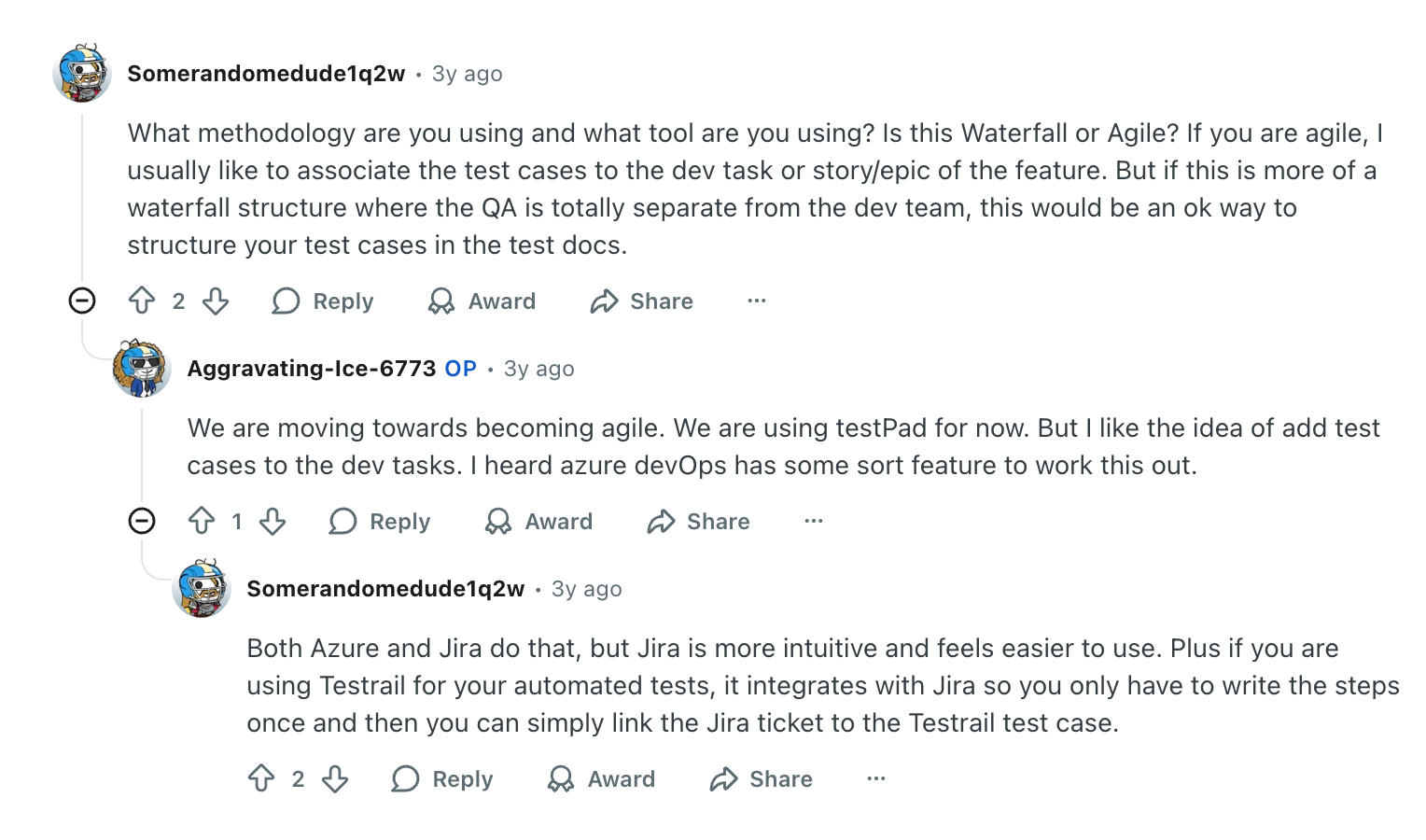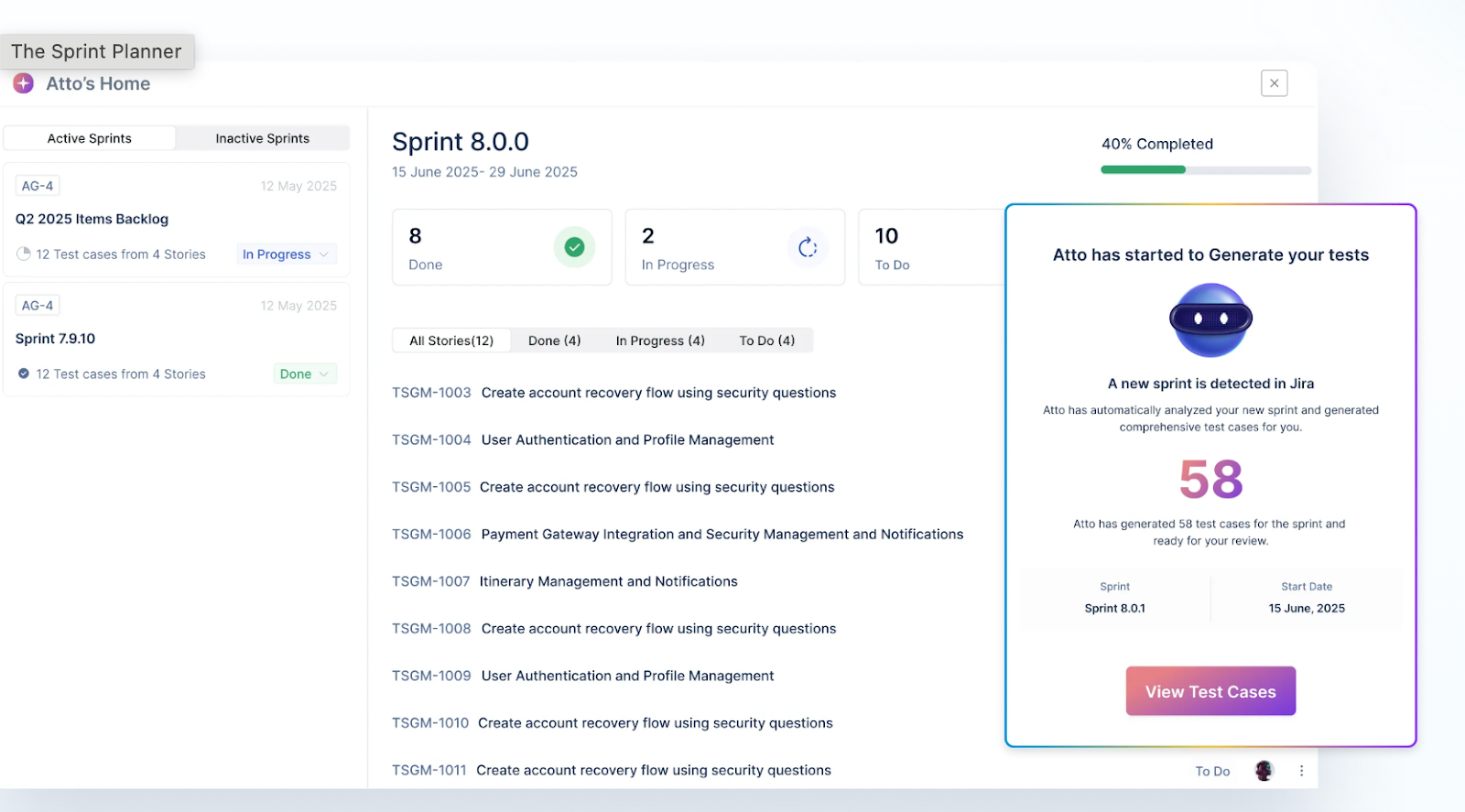Table Of Contents
- 1 BrowserStack vs Testpad
- 2 Overview
- 3 What is BrowserStack Test Management?
- 4 What is Testpad?
- 5 Head-to-Head Feature Comparison
- 6 Pricing Analysis: Cost Comparison Breakdown
- 7 Performance & Scalability Comparison
- 8 User Experience & Interface Analysis
- 9 Integration Capabilities Deep Dive
- 10 Use Case Scenarios: When to Choose What
- 11 Real Users Recommendations
- 12 Alternative Solutions to Consider
- 13 Conclusion
- 14 Frequently Asked Questions
BrowserStack Vs Testpad
BrowserStack and Testpad sit in adjacent but different corners of the testing world. BrowserStack is a cloud testing platform for running manual and automated tests on real browsers and devices for execution, environments, automation at scale, and CI/CD. Testpad is a lightweight test management tool built around checklists and flexible manual test workflows. Think planning, organizing, guiding testers, and tracking results. Let us dive into detail about what each tool does, its benefits, comparison, and the best tool that suits your organization.
Overview
What is BrowserStack?
BrowserStack is a cloud-based testing platform for web and mobile applications, providing access to thousands of real devices, browsers, and operating systems. It supports both manual and automated testing (Selenium, Appium), offers advanced dashboards, CI/CD integrations, and test management, making it ideal for teams needing robust cross-browser/device test coverage and automation support.
What is Testpad?
Testpad is a lightweight, checklist-driven test management tool focused on manual testing workflows. It is designed for simplicity, easy adoption, and collaborative manual test planning and execution, using hierarchical checklists and real-time guest access for progress tracking, making it ideal for teams prioritizing fast, flexible manual processes over complex automation.
Key Differences Between BrowserStack and Testpad
- BrowserStack: Automation support, real device testing on thousands of devices, CI/CD integrations, advanced dashboards and reporting for enterprise-ready QA workflows.
- Testpad: Manual test planning and execution with flexible checklists, collaborative guest access, and simple real-time progress tracking without built-in automation.
What is BrowserStack Test Management?
BrowserStack Test Management unifies manual and automated testing in a single, intuitive platform. It helps teams design, execute, and track tests effortlessly while maintaining complete visibility across projects.
Key Features of BrowserStack Test Management
- Centralized Test Case Management – Create, organize, and execute both manual and automated tests in one unified workspace, with no tool switching or context loss.
- AI-Powered Test Creation – Instantly generate detailed test cases from requirement documents or natural-language prompts using built-in AI agents, saving hours of manual effort.
- Seamless Migration & Data Handling – Effortlessly import and export test cases from tools like TestRail, Zephyr, Xray, or CSV files to ensure a smooth transition and data consistency.
- Actionable Insights & Analytics – Gain complete visibility into test progress and quality with real-time dashboards, defect traceability, and test health metrics that drive data-backed decisions.
- End-to-End Toolchain Integration – Connect seamlessly with Jira, Azure DevOps, and CI/CD pipelines to align QA with development and release workflows.
- Two-Way Jira Sync – Keep your teams in perfect sync any update in BrowserStack Test Management or Jira automatically reflects in the other, ensuring zero duplication or missed updates.
What is Testpad?
Testpad is a lightweight, checklist-style test management tool built for simplicity and speed. Designed around manual testing workflows, it replaces bulky, process-heavy systems with a clean, intuitive interface that anyone, QA engineers or non-technical stakeholders, can use easily.
Key Features of Testpad
- Checklist-Driven Simplicity – Testpad organizes test cases as flexible checklists or outlines, making it faster and more intuitive than traditional systems.
- Zero Learning Curve – Its minimalist design ensures even non-QA users like product managers, interns, or clients can start testing within minutes.
- Guest Tester Access – Invite external testers or collaborators to execute tests without needing logins, simplifying participation.
- Real-Time Progress Tracking – View instant reports, live execution status, and shareable progress dashboards for complete visibility.
- Fast, Keyboard-Friendly Editing – Create and reorder tests quickly using a responsive, keyboard-driven editor with drag-and-drop flexibility.
- Lightweight Integrations – Connect easily with tools like Slack, GitHub, or bug trackers to streamline feedback and issue tracking.
- Manual-First Approach – Purpose-built for manual and exploratory testing, keeping things lean by omitting heavy automation or analytics layers.
Head-to-head Feature Comparison
Here’s how BrowserStack Test Management and Testpad stack up across key functional dimensions:
| Features | BrowserStack Test Management | Testpad |
| Manual & Automation Support | It supports both; it lets you run manual tests, import automation results, and convert test cases to automated ones via low-code agents. | Primarily manual. No built-in automation execution or scripting support. |
| Test Case Organization | Rich structure like folders, tags, versions, and deduplication. | Hierarchical checklists and outlines; flexible but simpler. |
| AI Assistance | AI agents for test generation, deduplication, and automation suggestions that are built in. | No AI/automation features. |
| Scalability | Designed for scale: many test cases, multiple concurrent runs, analytics | More suited for small-to-mid teams; may lack features for very large projects. |
| Ease of Use | More features that lead to a steeper learning curve, but the UI is intuitive. | Very low learning curve; minimal onboarding. |
| Integrations | Deep integrations like Jira, Azure DevOps, CI/CD, Jenkins, CircleCI, etc. | Lightweight integrations: bug tracker links, Slack, GitHub, etc. |
Pricing Analysis: Cost Comparison Breakdown
BrowserStack Test Management
- BrowserStack offers multiple plans combining cross-browser, mobile, visual, and test management features.
- The Team Ultimate and Pro / Enterprise tiers include AI agents and advanced test management features.
Testpad
- Testpad’s pricing is more straightforward and oriented around the number of testers (and active scripts).
- Testpad comes in plans like Essential, Team, team 15 and department.
Performance & Scalability Comparison
Performance and scalability hinge on how well each tool handles increasing test volumes, concurrent users, and growing complexity.
BrowserStack Test Management
- Supports large test suites, multiple projects, and many concurrent test runs.
- Because it sits on top of BrowserStack’s infrastructure, you benefit from geographically distributed servers, real device clouds, etc.
- AI agents and deduplication aim to reduce test clutter and keep performance manageable.
Testpad
- Architecture is simple since it handles fewer functionalities, just manual tests, and performance overhead is lower.
- Testpad handles typical team loads comfortably as claimed in its marketing.
- But for very large test suites, highly granular traceability, or the massive scale of hundreds of testers and thousands of test cases, it may hit limits but is less optimized for scale.
User Experience & Interface Analysis
BrowserStack Test Management
- Modern, sleek UI designed to integrate with BrowserStack’s environment.
- AI agents help reduce tedium, like generating test cases, which improves experience.
- Tight coupling with existing BrowserStack panels. Less context switching if you already use BrowserStack.
Testpad
- Extremely lightweight and minimal, almost no training required.
- Keyboard-driven editing, drag & drop reordering, making testers stay in flow.
- Guest tester mode means stakeholders can view/run tests without fuss.
- Reports are live and straightforward, and progress is visible at a glance.
Integration Capabilities Deep Dive
BrowserStack Test Management
- Two-way Jira binding, so test case changes in one tool reflect in the other.
- Can trigger automation runs, upload test results, integrate with Jenkins, CircleCI, Azure Pipelines etc.
- Works with Selenium, Cypress, Appium, etc.
- Supports importing from TestRail, Xray, Zephyr, and CSV, helping teams migrate.
- Full API support to integrate custom tools or automate flows.
Testpad
- Add direct links to external bug trackers for quick defect reporting without leaving the tool.
- Send test updates or collaborate with teams in real time through connected channels.
- Move test data in and out of Testpad easily for migration or reporting purposes.
- Since Testpad is designed purely for manual testing, it doesn’t integrate with automation frameworks or CI tools.
Use Case Scenarios: When to Choose What
Choose BrowserStack Test Management if your QA process demands scalability, automation, and centralized visibility across projects. It’s ideal for:
- Cross-Browser and Cross-Device Testing Teams – Perfect for teams already using BrowserStack’s testing infrastructure who want to unify test management and execution.
- Automation-Heavy Workflows – Best suited for QA teams running automated suites using Selenium, Cypress, Appium, or similar frameworks.
- Enterprise QA and DevOps Pipelines – Its CI/CD integrations with Jenkins, CircleCI, and Azure Pipelines make it a strong fit for continuous testing setups.
- Data-Driven QA Organizations – Real-time dashboards, AI insights, and test health analytics help track quality metrics across multiple releases.
- Teams Migrating from Legacy Tools – The ability to import from TestRail, Zephyr, or Xray simplifies adoption without losing historical data.
Testpad shines in scenarios where speed, simplicity, and ease of collaboration matter most. It’s a great fit for:
- Manual and Exploratory Testing – Ideal for teams that rely on human insight and prefer checklist-style testing over rigid workflows.
- Small QA Teams or Startups – Quick to set up, easy to learn, and affordable perfect for lean teams without complex tooling.
- Cross-Functional Collaboration – Non-QA roles like product managers or client teams can easily participate in testing without training.
- Projects with Rapid Iterations – Lightweight structure and guest access make it easy to update, execute, and share test results in real time.
- Teams Without Automation Pipelines – Since it focuses purely on manual testing, Testpad works best when automation isn’t yet part of your QA strategy.
Real Users Recommendations


Alternative Solutions to Consider
Test Management by Testsigma is the best alternative solution to BrowserStack and Testpad. Test Management by Testsigma is an agentic, AI-powered test management software designed to eliminate the manual effort of maintaining and executing test cases. Unlike Qase, it leverages intelligent AI agents that act as your QA co-workers, automating everything from planning to execution and reporting, making test management faster, smarter, and truly autonomous.
AI Agents That Power Autonomous Test Management
- Sprint Agent – Automatically detects when a new Jira sprint begins and plans your corresponding tests, ensuring instant alignment between development and QA.

- Generator Agent – Instantly creates test cases from multiple inputs such as user requirements, Figma designs, PDFs, screenshots, videos, or even natural language prompts.
- Runner Agent – Validates and executes tests directly within the browser, making it ideal for quick sanity checks and low-effort test runs.
- Bug Reporter Agent – Intelligently identifies issues and logs them in tools like Jira, drastically reducing triage time and improving bug lifecycle efficiency.
Beyond AI – Core Features That Streamline QA
- Self-Healing Tests – Automatically update test cases when underlying application changes occur, minimizing maintenance overhead.
- Jira Integrations – Includes robust, two-way Jira synchronization for complete requirements traceability and seamless collaboration between QA and development teams.
Conclusion
Both BrowserStack Test Management and Testpad cater to different testing needs. If you’re looking for an enterprise-grade solution with advanced integrations, automation support, and analytics, BrowserStack Test Management is a strong choice. If your team wants simplicity, speed, and a lightweight manual testing workflow, Testpad delivers exactly that with minimal setup and maximum ease of use. However, if you want the best of both worlds, the simplicity of Testpad with the scalability and intelligence of BrowserStack, Test Management by Testsigma stands out. Powered by agentic AI, it automates test creation, planning, execution, and defect tracking, helping QA teams work faster and smarter.
Frequently Asked Questions
It depends on your testing needs. BrowserStack is better for teams requiring cross-browser/device testing, automation support, and advanced reporting. Testpad excels for manual testing, simplicity, and quick adoption.
-BrowserStack supports both manual and automated testing, integrates with CI/CD pipelines, and offers robust analytics.
-Testpad is a manual test management tool using a checklist-style approach, prioritizing simplicity over automation or advanced integrations.
Yes, migration is possible via CSV export/import. BrowserStack also supports importing from other test management tools like TestRail, Zephyr, or Xray. However, due to differences in workflows and automation capabilities, some manual adjustments may be required.
Testpad is generally more affordable for small teams, with lower subscription fees and no dependency on additional infrastructure. BrowserStack’s cost is higher, especially if you include automation and real-device testing.
No. BrowserStack supports automated testing via frameworks like Selenium, Cypress, and Appium. Testpad focuses solely on manual testing and does not support automation execution.


